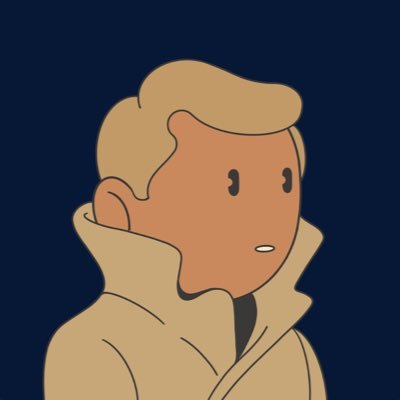About Gregorio Zanardi

Visual artist born in 2000 in Argentina. He has been drawing for as long as he can remember. At 18, he began selling his first paintings and hand-intervened clothing. At 21, he entered the NFT space and decided to fully dedicate himself to visual art.
Deeply influenced by his painter uncle, his work often revolves around expressive faces imbued with nostalgia and introspection — frequently portraying elderly figures and the recurring motif of the cigarette. For him, the cigarette is a symbolic element, a shifting sign that can evoke everything from desire to profound contemplation.
Today, he explores both digital and physical mediums, creating art with Procreate while continuing to paint with oil and acrylic — blending traditional techniques with contemporary approaches.
An interview with Gregorio Zanardi led by Carlo Borloni


“I want to be less human” is a powerful statement, almost spiritual. When did this desire begin to take shape in you, and how has it evolved through your painting?
Yes, "I want to be less human" is a spiritual statement. This desire began to take shape in 2019, when I was 18, right in the heart of adolescence. That year marked a profound personal shift. I was immersed in a lifestyle of parties and substances, making decisions that led me to a dark place. Panic attacks and anxiety became frequent. At that time, psychologists wanted to prescribe medication, but something within me insisted I could face it on my own.
That’s when I turned to spirituality. I started meditating, seeking knowledge, and connecting with practices that helped me stabilize both my body and emotional state. It made me feel more vulnerable, but also more powerful. It took me over two years to heal without external aid, and that process made me stronger.
I’ve been drawing and painting since I was three, but during that time of inner struggle, I began using drawing as a tool for release and calm. It was in that very period that I began creating with true dedication. My journey into spirituality and my deeper commitment to painting happened in parallel. To this day, I try to keep both paths aligned. The more connected I am with that spiritual side, the more profound things emerge in my work.


You speak of instinct as a form of intelligence, something pure and essential. How do you access that instinctual state while creating? Is there a ritual or environment that helps you reach it?
I can’t always create in that instinctual state, it’s not easy but I usually access it when I’m calm and fully immersed in the process. It’s almost like a meditative state. I haven’t yet learned to force it; it’s something that arrives on its own.
However, there are certain things that help me reach it: music, solitude, and giving myself time. I usually prepare my space for a whole afternoon or night of work. About two hours before painting, I sit down, drink mate, and start playing music. Classical music helps, but I often flow through different moods: jazz, Argentine rock, international rock, even bossa nova, depending on what my body and emotions call for. The key is to stay alert and prepared, because inspiration tends to come when I least expect it. As Picasso said “may inspiration find me working” I say not necessarily working but may it find me with a blank piece of paper and a brush loaded with paint, the context ready.


In this new body of work, animals appear almost as mirrors of human emotion, or perhaps the reverse. How did you approach the visual language of these hybrid beings?
In this body of work, I usually began by constructing the animal first. It takes up most of the composition, solid and grounded, generating a sense of power and stability. Then, the human element appears, attempting to merge with the animal. Many of the human figures seem desperate to enter or become one with the creature, yet their faces are often hidden, unlike the animal's, which remains visible and clear.
Some of these animals are smoking, which to me symbolizes stillness, reflection, and inner peace. The fusion between human and animal is not seamless, there’s a lot of contrast, both in form and color. The vibrant, solid backgrounds highlight the animal’s serenity while the human figures are often painted in dark tones, echoing their turmoil. It’s harmony in the midst of chaos, a balance of opposites. As above, so below. Light only truly shines in darkness.


Many of your characters seem caught between transformation and resistance, almost stuck in the act of becoming. Do you see this collection as a portrait of tension or of surrender?
I see this collection as a series of moments in the life of a person trying to grasp the animal state of flow. Some characters appear desperate to reach it, others surrender, and a few seem to succeed or at least appear to.
When I look at them, I often ask myself: did they manage to tame the animal within? One piece in particular, Grotesque Clouds, feels like the turning point. It portrays a human who might have tamed the bull, but fear still lingers. The human is on top of him, he is overpowering him, but he tries to hide his face, is afraid.
He’s standing at the edge. That painting represents the midpoint between those who surrender and those who overcome.


What role does the body play in this series? Not the social or symbolic body, but the physical one, the one that breathes, aches, and moves.
In this series, the physical body plays the role of dissolution. Consciousness loses awareness of the body, of time, and of space. The body becomes distorted, it no longer follows logic, but energy. It's a vessel for force and disintegration.
This reflects the human experience of attempting to shift mental and spiritual states. The body becomes a symbol of that chaotic transformation alive, but unanchored.


Is there a specific work in this collection that felt like a breakthrough, where you truly felt that ‘animal’ clarity while painting it? What happened in that moment?
Yes, there is one piece in this collection where I truly experienced that 'animal clarity': Blue Fear. It was the first work I created for this series.
That night, my mind was racing, full of unfinished thoughts and anxious energy. I usually go to bed early, but around 3:40 a.m. I couldn't sleep. I got up, grabbed my tablet, and something just poured out of me, fluid, fast, and joyful. It felt like I was spitting out something deeply clear. I was having fun, and my body wanted more. I ended up creating three paintings that night.
I feel a deep connection with that tiger. The day I discovered Ligabue's art and saw his powerful tiger, something stirred inside me. I knew that animal would guide me into something new, I just didn’t know when. That night, it came.


The concept of “flow state” is central to your reflection. Do you think we can train ourselves to live more in that state, beyond the act of painting?
Yes, I absolutely believe we can train ourselves to live more in a state of flow, regardless of the discipline. For me, it comes from listening to my body and intuition, and doing what I know nourishes my soul. That’s how I discovered it, not claiming it’s the right way for everyone, but it worked for me.


Your palette remains vibrant and expressive, yet the emotional tone of these works feels darker, more introspective. How did you calibrate color and emotion in this series?
Yes, the palette remains vibrant as in most of my work, but the emotional tone of this series is much darker and more introspective. I'm fascinated by contrast in all aspects of life.
Like how a frog can be stunningly colorful yet lethally toxic. Or how a vividly red rose can cut you the moment you grab it. Nature (especially plants and animals) awakens a lot in me. Observing them makes me feel more alive, and reminds me of the beauty and cruelty of existence.
In this collection, the color can represent that surface beauty, while the deeper meaning lies in the truth behind it raw, real, often uncomfortable and cruel.


You mention the idea of God as something present in every living thing. Does painting, for you, become a spiritual act, a way to reconnect with that divine pulse?
Yes, I try to make painting a spiritual act but it's not always easy. I approach it seriously, with intention and respect. I try to use the act of creating as a way to connect with the source, with something beyond myself.
In fact, I believe that’s the most honest way to create so that the viewer can connect with the work and maybe take something, even the smallest thing, into their own life. And for me too, it nourishes my spirit.


If this collection were a manifesto, a raw, instinctive one, what would its message to the viewer be, in just a few words?
If this collection were a manifesto, its message would be my response to a world obsessed with perfecting everything it touches.
In this series, I let instinct guide the brush. I let the brutality of the stroke speak louder than calculated form. I'm not seeking beauty I'm seeking truth.
I paint to remember that we are body, error, desire, and nature. This series is my way of disobeying the artificial and honoring the natural. In the state of flow, nothing is perfect, only life is.
We have to be less human today, we have to be more alive.

Sign up for our newsletter to keep up with the latest news from NINFA
Sign up for our newsletter to keep up with the latest news from NINFA
Write us at: info@ninfa.io, or click here if you need support
Copyright © 2026 Ninfa Labs - 12094240962 - All rights reserved

